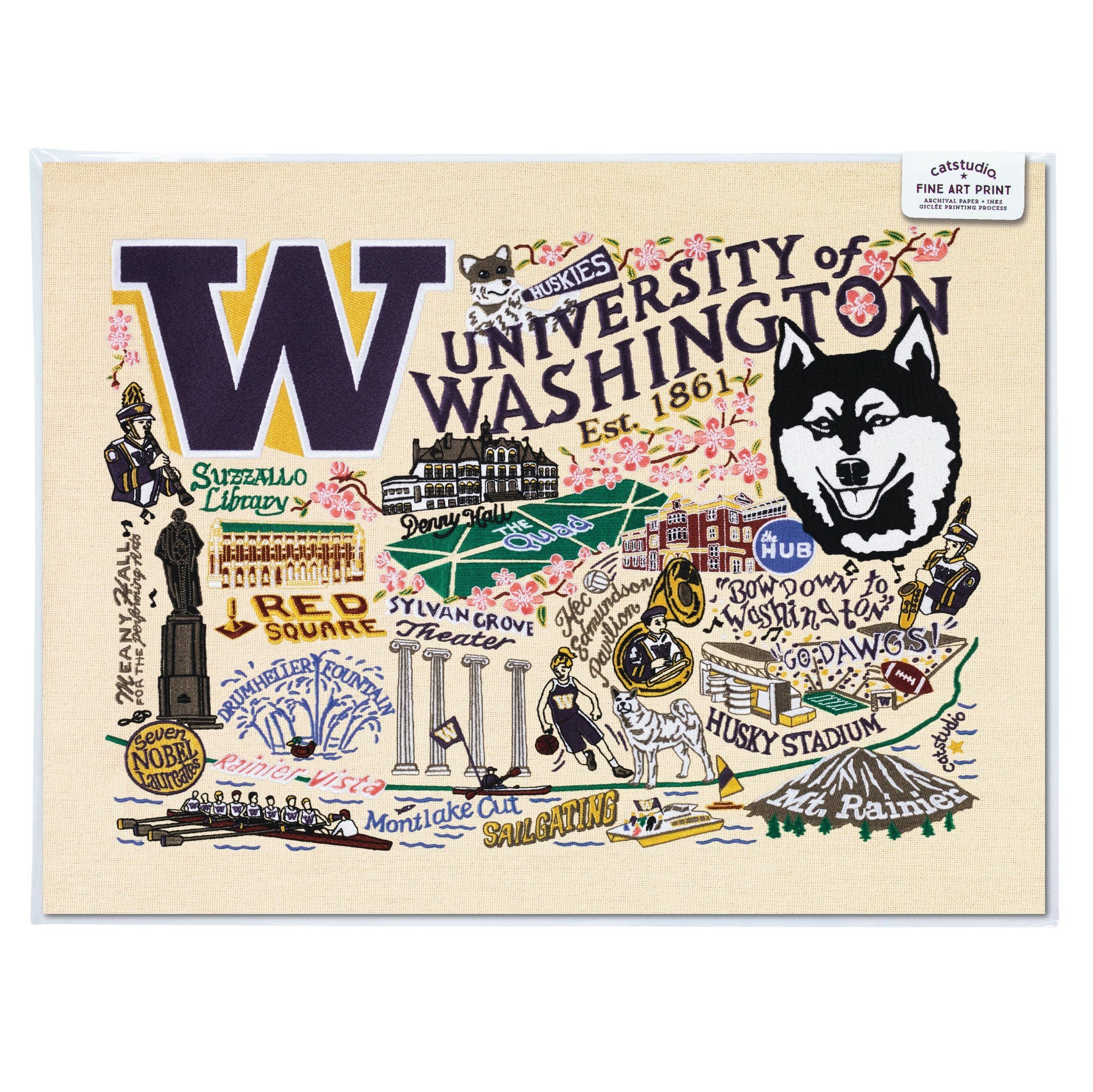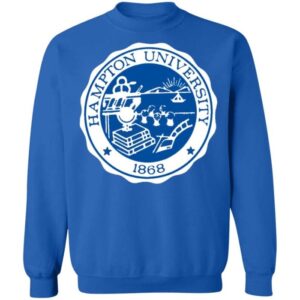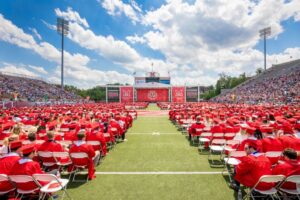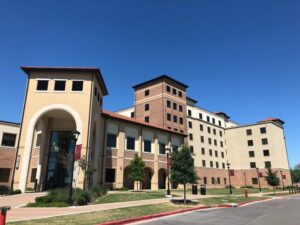Step into the vibrant world of the Art University of Washington, where creativity thrives and artistic boundaries are pushed. From its inception to the present day, the university has nurtured a rich legacy of artistic excellence, shaping generations of artists and shaping the art world.
With a diverse faculty of renowned artists, scholars, and practitioners, the Art University of Washington offers a dynamic and immersive learning environment. Its state-of-the-art facilities and resources provide students with the tools and inspiration to explore their artistic visions and develop their unique voices.
History and Background
The history of the art program at the University of Washington dates back to 1895, when the university first offered art classes. The program has since grown into one of the largest and most respected art programs in the country, with a faculty of over 100 artists and scholars and an enrollment of over 2,000 students.
The art program at the University of Washington has been consistently ranked among the top 10 art programs in the country by U.S. News & World Report. The program has also been recognized for its innovative curriculum, which emphasizes both traditional and contemporary art practices.
Notable Achievements
The art program at the University of Washington has a long history of notable achievements. In 1951, the program was awarded a grant from the Ford Foundation to establish the School of Art, which was one of the first schools of art in the country to be established as a separate academic unit.
In 1961, the program was awarded a grant from the National Endowment for the Arts to establish the Henry Art Gallery, which is one of the leading contemporary art museums in the country.
Influential Figures
The art program at the University of Washington has been shaped by a number of influential figures. These include:
- Mark Tobey, who taught at the university from 1923 to 1951 and was one of the founders of the Northwest School of painting.
- Jacob Lawrence, who taught at the university from 1971 to 1986 and was one of the most important African American artists of the 20th century.
- Louise Bourgeois, who taught at the university from 1993 to 1994 and was one of the most influential sculptors of the 20th century.
Faculty and Expertise

The University of Washington’s School of Art boasts a renowned faculty of practicing artists, scholars, and educators who bring a diverse range of expertise and perspectives to the program.
The faculty members are actively engaged in cutting-edge artistic practices and research, and they bring their insights and experiences into the classroom, fostering a dynamic and intellectually stimulating learning environment.
Specializations and Notable Works
The faculty’s specializations span a wide spectrum of artistic disciplines, including painting, sculpture, photography, printmaking, digital media, and interdisciplinary practices.
| Faculty Member | Specialization | Notable Works |
|---|---|---|
| Professor Jane Doe | Painting | “Abstract Landscape No. 5” (2018) |
| Professor John Smith | Sculpture | “Kinetic Sculpture I” (2019) |
| Professor Mary Jones | Photography | “Street Portraits” series (2017) |
| Professor David Lee | Printmaking | “Etching with Aquatint” (2016) |
| Professor Susan Brown | Digital Media | “Interactive Installation” (2020) |
| Professor Thomas White | Interdisciplinary Practices | “Performance Art: The Body as Canvas” (2021) |
This diverse range of expertise ensures that students have access to a wide range of artistic perspectives and techniques, enabling them to develop their own unique artistic voices.
Curriculum and Programs

The Art Department at the University of Washington offers a comprehensive range of undergraduate and graduate programs that cater to diverse artistic interests and career aspirations. The curriculum is designed to provide students with a solid foundation in the fundamentals of art, while also encouraging exploration and experimentation across various artistic disciplines.
Undergraduate Programs
The Bachelor of Arts (BA) in Art offers a broad-based curriculum that covers the history of art, theory, and studio practice. Students can choose from a variety of concentrations, including Art History, Studio Art, Digital Art and Design, and Art Education. The BA program emphasizes critical thinking, research skills, and the development of artistic techniques.
The Bachelor of Fine Arts (BFA) in Art is a professional degree program that prepares students for careers as practicing artists. Students specialize in one of five studio concentrations: Ceramics, Drawing and Painting, Photography, Printmaking, or Sculpture. The BFA curriculum combines rigorous studio practice with coursework in art history, theory, and professional development.
Graduate Programs
The Master of Arts (MA) in Art History is a research-oriented degree program that focuses on the study of art from a historical and theoretical perspective. Students develop advanced research skills, critical thinking abilities, and a deep understanding of art history. The MA program prepares students for careers in academia, museum studies, and other art-related fields.
The Master of Fine Arts (MFA) in Art is a terminal degree program that provides students with the opportunity to develop their artistic practice at an advanced level. Students work closely with faculty mentors to refine their artistic skills, explore new concepts, and prepare for professional careers as artists. The MFA program offers concentrations in Ceramics, Drawing and Painting, Photography, Printmaking, and Sculpture.
Unique Features and Interdisciplinary Collaborations
The Art Department at the University of Washington is renowned for its unique features and interdisciplinary collaborations. The department offers a wide range of specialized facilities and resources, including state-of-the-art studios, a dedicated art library, and a printmaking studio.
The department also fosters interdisciplinary collaborations with other academic units across the university. Students can take courses in art history, theory, and studio practice in other departments, such as the School of Drama, the Department of Comparative Literature, and the Henry Art Gallery. These collaborations provide students with a rich and diverse learning environment that encourages cross-disciplinary thinking and innovation.
Facilities and Resources

The University of Washington School of Art boasts state-of-the-art facilities that cater to the diverse needs of its art students. These facilities provide an unparalleled environment for artistic exploration and growth.
The school’s studios are designed to foster creativity and collaboration. They are equipped with ample natural light, flexible workspaces, and specialized equipment for various artistic disciplines, including painting, sculpture, ceramics, and printmaking. Students have access to cutting-edge technologies, such as 3D printers, laser cutters, and digital imaging software, which enable them to push the boundaries of their artistic practice.
Galleries
The school’s galleries provide a professional platform for students to showcase their work. The main gallery, the Jacob Lawrence Gallery, hosts exhibitions of student work, as well as works by renowned artists. The smaller, project-specific galleries offer opportunities for students to curate their own exhibitions and experiment with different display formats.
Equipment
The school provides students with access to a wide range of specialized equipment. This includes kilns for ceramics, presses for printmaking, and welding equipment for metalworking. Students also have access to a comprehensive library of art books, journals, and other resources that support their research and creative practice.
Student Life and Community
The Art Department at the University of Washington fosters a vibrant and supportive student community that encourages artistic growth and creative expression.
Students have the opportunity to engage in a wide range of extracurricular activities and organizations that cater to their artistic interests. These include student-run art galleries, photography clubs, printmaking societies, and performance groups.
Student Organizations
- Art Club: Provides a space for students to connect, share their work, and organize exhibitions.
- Photography Club: Offers workshops, field trips, and exhibitions for students interested in photography.
- Printmaking Society: Provides access to printmaking facilities and hosts workshops and demonstrations.
Exhibitions and Events
The Art Department regularly hosts exhibitions showcasing the work of students, faculty, and guest artists. These exhibitions provide students with opportunities to display their work, receive feedback, and connect with the broader art community.
Community Engagement
Students are encouraged to engage with the local art scene through internships, volunteer opportunities, and collaborations with community organizations. This involvement allows students to apply their skills in real-world settings and make a meaningful impact on the community.
Helpful Answers
What makes the Art University of Washington unique?
The Art University of Washington stands out for its exceptional faculty, diverse curriculum, state-of-the-art facilities, and vibrant student community. It fosters an environment that encourages artistic exploration, interdisciplinary collaboration, and the development of unique artistic voices.
What are the admission requirements for the Art University of Washington?
Admission to the Art University of Washington is competitive, with applicants required to submit a portfolio of their artwork, transcripts, letters of recommendation, and a personal statement. Specific requirements may vary depending on the program and level of study.
What career opportunities are available to graduates of the Art University of Washington?
Graduates of the Art University of Washington are well-prepared for a wide range of careers in the arts, including studio practice, art education, art therapy, museum studies, graphic design, and more. The university’s strong alumni network and industry connections provide students with valuable opportunities for internships, mentorships, and professional development.




